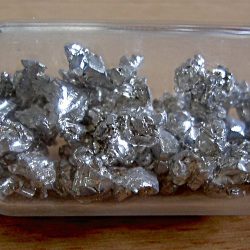The sharks, they glide through the water with unmistakable grace, remnants of the ancient past, they dive, and they rise, from the ocean’s murky depths,to its sun-kissed swallows, rousing fear and awe, like no other creature in the sea.
There is no single reason behind shark’s survival in all five major extinction events. Behind every survival, there were different causes, and different groups of them pulled through each one.
Survival of deep-water species and their generalist diet played the main role. The diversity of sharks may also have played an important role.
They can explore different parts of the sea, from deep, dark oceans to shallow seas, and even rivers. They can eat a wide variety of food such as fish, seals, crabs, and whales. This diversity means that sharks can survive extreme changes in the ocean.
There are also a few amazing facts that are helping the sharks rule the sea for millions of years.
Do sharks live in volcanoes?
Some tropical coral reefs to the deep sea, some of the sharks even venture into arctic waters. Scientists during their exploration and research found two species of sharks living inside the crater of an underwater active volcano. While studying the kavachi volcano which is active, scientists found schooling of sharks.
How many species of sharks exist?
There are over 500 species of sharks, and 143 of them are under threat, listed by the IUCN as vulnerable or critically endangered. They are in the sea a lot longer than dinosaurs.
Biggest shark in the world
The world’s biggest living fish is a shark. Of the estimated 34,000 species of fish, the largest are whale sharks. These giant sharks usually grow to about 40 feet long and weigh an estimated 15 tons. Their mouths alone can span four feet wide. The gigantic whale shark, however, pales in comparison to the largest fish that ever existed, the Megalodon. Ruling the ocean over 20 million years ago, it is thought that the prehistoric creature could have reached 80 feet long, weighing up to around 70 tons. Unlike whale sharks, the megalodon was carnivorous and consumed any creature that fits into its nearly 10 feet wide mouth.
Sharks can shed over 30,000 teeth
Throughout their lives, some species of shark can shed over 30,000 teeth. Unlike humans, who are born with a set number of teeth in their jaws, they have a seemingly limitless supply. They can grow, lose, and replace their teeth as needed. Furthermore, most sharks have multiple rows of teeth in their jaws.
The jaws of a great white shark can contain up to seven rows that hold up to 300 teeth at any one point.
Most of them, as they hunt their prey, end up losing their teeth individually.
However, the cookie-cutter shark loses and replaces the teeth in its lower jaw all at once.
Sharks have no bones
Yes, unlike most fish, sharks have no bones. Though we consider them as fish, the skeleton of a shark consists of cartilage. Cartilage is a type of connective tissue that is lighter than bones, which benefits them to be buoyant.
Sharks lifespan
In the wild, their average lifespan is about 20-30 years. The average lifespan of Tiger sharks in the wild is about 27 years.
Sharks speed in the water
The fastest known shark, the Mako shark, can reach speeds of up to 46miles per hour (ca. 74 kilometers per hour).
The speed is due to their body’s hydrodynamic design. Many of them have torpedo-shaped heads that allow them to cut through the water with little resistance.
Read Also:Central Route to Persuasion: Definition & Examples
Plus, there are flat, V-shaped scales under the skin of sharks, called dermal denticles. The denticles help water flow smoothly over the skin, which reduces friction and helps sharks swim quickly and quietly. They also have skeletons made of cartilage instead of bone. As cartilage is much lighter than bone, they have less weight to carry.
Do sharks lay eggs?
Sharks may lay eggs or live young. Egg-laying sharks only lay a few large eggs. They may come in various forms, such as sacks called mermaid purses or corkscrews. These eggs act as external wombs in which shark embryos complete their development.
However, most of them give birth to live young called pups. They are the youngest of most live-bearing species, gestate for around one year. Some even begin practicing their predation skills while in the womb.
Before they are born, the sand tiger shark pups compete with their siblings. In fact, the strongest pup in each of the two wombs devourers its weaker brothers and sisters.
Most sharks have excellent vision
Most of their species can see in the darkest places of the sea too. They have excellent night vision as they have mirrored crystals behind their retina called tapetum lucidum. Sharks can see colors too. They have both rods and cones in their eyes like humans. This fish can see with both eyes or with one eye individually at one time. This allows them to focus better on one item if they want to. By moving their heads back and forth while swimming, they can get an almost 360-degree view around themselves.
Do you think sharks have good six senses?
Sharks can smell blood from miles away. They can even smell 1ml of blood in 1L water and can detect sound from 3000 feet away. Their ears are located on the side of their head, behind the eyes that are highly sensitive to low-frequency sounds. These are made of 3 cartilage tubes filled with fluid and lined with hair cells. Sound waves cause these tiny hairs to vibrate, and the brain then interprets the sound.
Sharks have many nerve endings under their skin, and also in their teeth. They try to observe the object with their teeth.
Sharks are warm or cold-blooded
They are most likely cold-blooded as other fishes. Their body temperature matches the temperature of the surrounding water. But white sharks can maintain their stomach temperature up to 14°C more than the ambient water temperature. This allows them to venture into colder waters and also to have explosive powder. Its muscles work a lot better when warm than cold, just like humans.
Sharks do have electroreceptor cell
They are one of the most electrically sensitive animals that can respond to a low voltage electric field. This electric field sensor is called the ampullae of Lorenzini. It is found in their nose and senses the electrical signal. As a result, they can sense every electrical signal sent by nearby creatures.
Sharks can be wired and wonderful
The goblin sharks can be bright pink where the blue sharks show an extraordinary blue color. Hammerhead sharks have a hammer-shaped head, which they use to pin the stingrays on the seafloor.
Shark leaves no fossils
Sharks have no bones. As their skeleton is made of cartilage, they don’t need fossilized remains for us. But fossilized shark’s teeth have been found.
Sharks maintain the natural balance of the ocean
Not enough sharks mean not enough oxygen for us to breathe. What’s the connection? They feed on smaller fish, in the same way, smaller fish feed on phytoplankton( tiny organisms that live in the seabed).
Phytoplankton consumes carbon dioxide and releases oxygen. So, without sharks, there will be too many fish eating the phytoplankton which as result will create a lack of oxygen.
They are under threat
Every year people are killing over an estimated 100 million sharks worldwide, in large part for the shark fin trade. In traditional Chinese culture, serving and eating shark fin is a sign of status and wealth. Because of the high demand and high prices, some shark populations have plummeted.
Some frequently asked questions
Q. Do sharks have ears?
Ans. Yes, they do have ears but inside of their body. Their ears are located on the side of their head, behind the eyes.
Q. Can sharks smell fear?
Ans. No, they can’t. They have strong smell senses but that doesn’t include feelings such as fear.
Q. What attracts sharks the most?
Ans. High contrast colors like yellow, white attract them the most. Bloods also can attract them.
Q. Are sharks attracted to pee?
Ans. There is no such evidence that urine attracts them.
Q. Why are sharks afraid of dolphins?
Ans. When dolphins see aggressive behavior from sharks, they immediately attack it with the whole pod. That is why sharks usually avoid pods with many dolphins.






